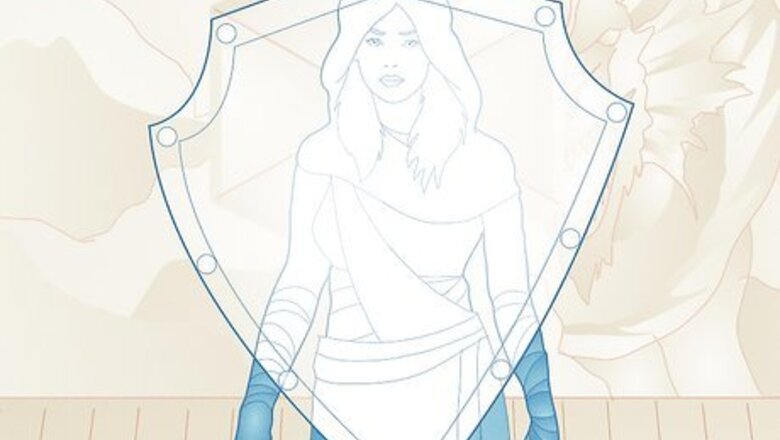
views
- Cover is a mechanic in D&D 5e that lets you move your PC behind an obstruction to stop them from getting hit with attacks.
- Half cover means your PC gets a +2 to their armor class and Dexterity saving throws, while three-quarters cover grants a +5 to both.
- Total cover means your PC’s entire body is obscured and can’t be targeted by any attack rolls, although area-of-effect spells may still do damage.
How does cover work in D&D 5e?

Cover is a mechanic that helps obscured creatures avoid enemy attacks. Taking cover means shielding your player character (PC) from an incoming attack, and depending on how much cover you have, your PC will get a mechanical bonus to their armor class (AC) and Dexterity (DEX) saving throws. Your PC (or any creature that takes cover) only benefits when an attack comes from the opposite side of the cover. If the attack comes from a direction where your PC isn’t covered, they don’t gain the benefits of cover.

You can hide behind multiple sources of cover, but benefits don’t stack. There are 3 degrees of cover total (half cover, three-quarters cover, and total cover). While it’s possible to hide your PC behind multiple sources of cover, you’ll only gain the benefits of the most protective source. Say your PC has half cover from crouching next to a creature and three-quarters cover from sheltering behind a large rock. In that case, your PC would simply have the benefits of three-quarters cover.
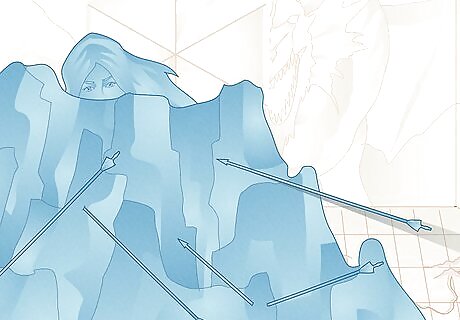
Cover applies to all attack rolls, including melee, ranged, and spells. When you make attack rolls, any covered enemy is harder to hit. Ranged attacks include all distance weapons (like bows and slings), while melee attacks include all close-combat weapons—even those with the reach property, like glaives and polearms. If you’re casting a spell that requires an attack roll, you’ll also have a harder time hitting an enemy with cover.
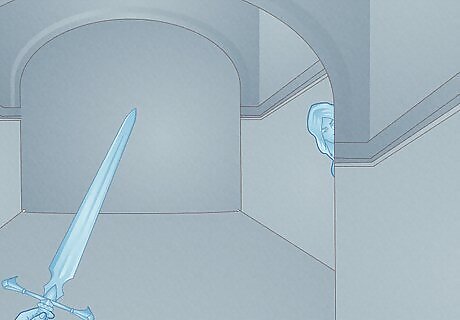
Anything that reasonably obstructs an attack can count as cover. Get creative while finding cover because you can hide behind anything from trees, walls, and furniture to other people! If the party’s barbarian attacks an enemy in close combat, for example, they might inadvertently give the enemy partial cover from ranged attacks. All objects, furniture, and terrain landmarks can be cover, too. For example, you could duck behind a cart in the street, a market stall, or the corner of a hallway.

You can bypass cover with spells, cantrips, or feats like Sharpshooter. If you’re a ranged fighter, consider using the Sharpshooter feat, which lets you ignore half and three-quarters cover. If you’re a spellcaster, consider the Spell Sniper feat (which offers the same benefits as Sharpshooter for spells). Playing an Arcane Archer fighter grants the Seeking Arrow ability, which ignores all cover (even total cover). Spellcaster PCs can use area-of-effect spells that ignore cover (like Cone of Cold). They also get cantrips that specify when targets can’t benefit from cover (like Sacred Flame).
Types of Cover
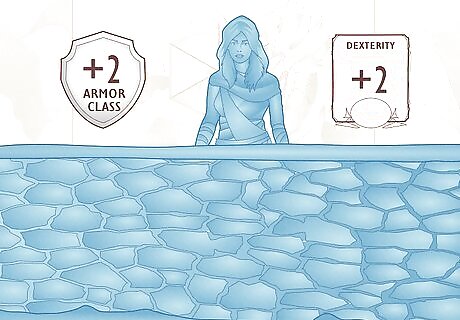
Half cover “Half cover” means that an obstacle must be blocking at least half of a creature’s body. Targets with half cover gain a +2 bonus to their armor class and DEX saving throws (since armor class determines how easy it is to hit a creature, and DEX saves determine how well a creature can dodge incoming damage). Examples of half cover: Hiding behind low walls, narrow trees, large pieces of furniture, or creatures (regardless of whether they’re an enemy or friend). When using a creature, the Dungeon Master (DM) has the final say on what qualifies as cover.

Three-quarters cover “Three-quarters cover” means that an obstacle is blocking roughly three-quarters of the target creature, making them harder to hit. Targets with three-quarters coverage get a +5 bonus to their AC and DEX saving throws, which is substantial in battle. Examples of three-quarters cover: Hiding behind thick trees, large rocks, arrow slits, or a portcullis. If a small portion of your PC’s body is still unguarded while in cover, they likely have three-quarters cover.
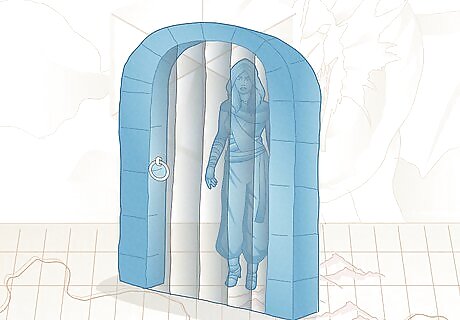
Total cover “Total cover” means that a target’s body is completely shielded by an obstacle. As a result, they can’t be targeted directly by an attack or spells. While attack rolls won’t work, area-of-effect spells and abilities can still deal damage to creatures with total cover. Examples of total cover: Hiding behind buildings, huge boulders, and tall walls, or closing a door. Breaking an enemy’s line of sight to your PC is key. If they can’t see you, they can’t attack, giving you total cover!
When to Use Cover

Take cover in battle while playing a ranged character. Ranged characters can easily attack from cover, giving them a solid vantage point to strike enemies and protection against retaliation. Spellcasters are easy to hit and don’t have as many hit points, so cover can help them survive even the most intense battles. Ranged spellcasters that could benefit from cover include sorcerers, wizards, and warlocks. Martial ranged classes (like rangers and some fighters and rogues) are a little sturdier, but could still use cover when necessary.
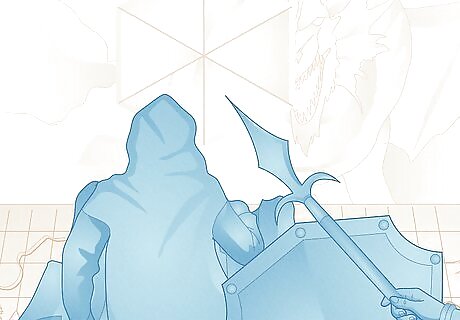
Act as cover if you have a melee character. If you’re playing a big, beefy character who specializes in hitting enemies up close, you might not need to take cover often, but you could become cover for a more vulnerable party member. When you take cover yourself, try attacking from behind it (especially if you have a reach weapon like a glaive). You could even trick an enemy melee attacker into becoming cover by navigating until they’re between you and an enemy ranged attacker.

Hide behind cover while fighting lots of ranged enemies. Regardless of your character’s fighting style, sometimes cover just makes sense—especially when too many arrows are raining down on the party. Get to cover when you need time to cast Cure Wounds, drink a potion, or regroup with the party before continuing the fight.
Does cover interact with other mechanics?

Cover and Prone The prone condition means your PC is flat on the ground. It forces ranged attacks against you to be made with disadvantage and it works alongside cover. If your PC is prone and has half-cover, they’ll get a +2 to their AC and ranged enemies will have a harder time hitting them. Disadvantage means rolling a d20 twice and taking the lower result, making attacks less likely to hit. Melee attacks within 5 feet get advantage on prone targets, so a prone PC is extra vulnerable to melee enemies. Advantage means rolling a d20 twice and taking the higher result (so attacks are more likely to hit).

Cover and Hide The hide action lets your PC try to conceal themselves from enemies, but they must be outside of an enemy’s vision to do it. Cover uses the same criteria, so finding places to take cover may also help you use the hide action. Rogues, in particular, can use hide as a bonus action and have the Unseen Attacker property, granting them Sneak Attack damage. That makes taking cover (and hiding) especially important for rogues looking to deal extra damage to enemies.
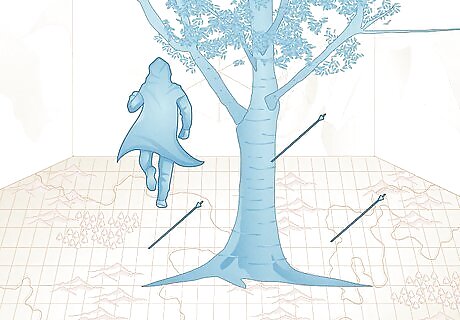
Cover and Dash “Dashing” means using an action to move instead of attacking, casting a spell, or doing something else. When an enemy is using one of your allies to get partial cover, your ally can opt to ready a dash action for the moment you attack. When your ally takes the dash action, they drop prone while you attack, then stand back up when you’re done, letting you take a full turn of attacks without being hindered by cover. While this isn’t a very common scenario, your party might be able to use a readied dash this way in confined spaces (where it’s harder to maneuver).
Dungeon Master Advice

Keep track of every creature’s size on the battlefield. Something that provides half-cover for a large creature might give three-quarters cover to a medium-sized creature (or total cover to a small creature). If there are any objects or terrain landmarks that could be used as cover, be sure you have their sizes, too. Similarly, fighting a huge creature might actually give medium-sized PCs total cover from other enemies. The more aware you are, the easier it’ll be to keep track of battles.
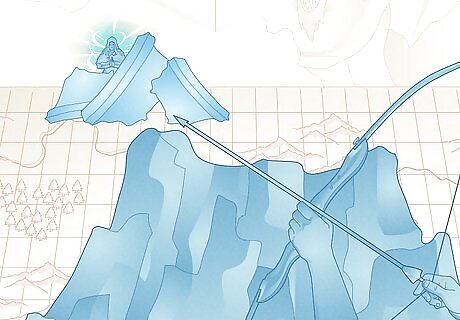
Have enemies take cover to give players a challenge. Combat in D&D 5e can become static if your enemies aren’t strategizing or interacting with the terrain. To make fights more interesting, have enemies take cover from PCs and attack them from behind cover. You can also use this to characterize your villains in D&D campaigns. For example, could an evil villain selfishly take cover while their henchmen attack?
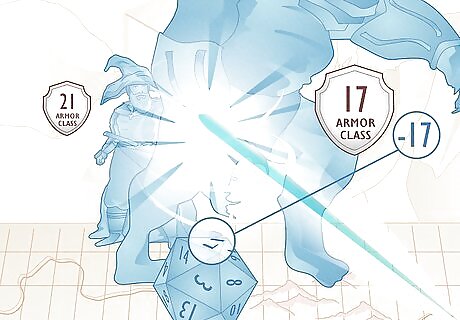
Consider using the DMG’s optional rule for hitting cover. The rule for “hitting cover” is optional and found in the Dungeon Master’s Guide. If an attack roll misses a creature behind cover (but would have hit without it), the attack is blocked. If an attack roll beats the armor class of the cover, it hits the cover. Say you have a gnome PC who hides behind a goliath PC. The gnome's AC is 21, and the goliath’s AC is 17. If an enemy rolls a 17 on an attack, it wouldn’t hit your gnome, but it can hit the goliath. They’d take damage in your PC’s place. This rule encourages players to think strategically and protect each other from harm. However, tell players about this rule before using it (since it’s not part of the standard rulebook).



















Comments
0 comment